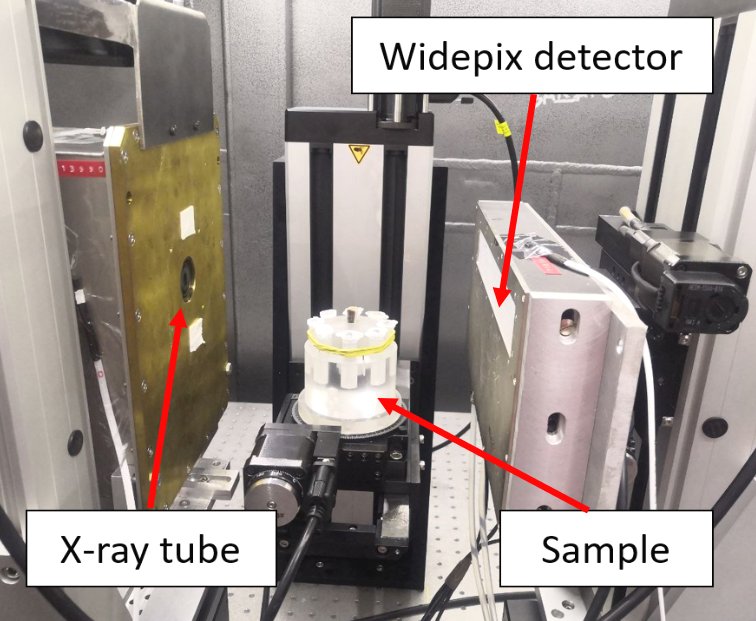Algorithm for material analysis by K-edges for energy-sensitive tomography
News, 24 July 2024
Employees of the Laboratory of Nuclear Problems at JINR and scientists of the Lomonosov Moscow State University developed an algorithm for qualitative and quantitative material analysis by the K-edges for energy-sensitive computed tomography.
When X-rays pass through an object, different materials within it attenuate this radiation depending on their atomic structure, density, and the energy of the radiation itself. These differences in attenuation are individual to each type of material. In particular, each chemical element is characterised by a K-edge, a sharp increase in X-ray absorption that occurs when the photon energy exceeds the binding energy of the inner electron shell of the atom.
The use of photon-counting detectors in X-ray computed tomography (CT) allows for obtaining spectral information. This provides the capability to detect and classify contrast agents (CAs) based on elements with relatively high atomic numbers and opens up significant prospects for diagnostics and preclinical trials. The criterion for the determination of its concentration based on the K-edge absorption is built on the study of the spectral characteristics of CAs. It considers scenarios where more than two contrast agents are simultaneously used in a wide range of concentrations in the study. The experiment was conducted using a laboratory microtomographic system based on the Medipix3RX detectors. The criterion utilizes five energy thresholds for the identification of a single agent. Lanthanides were used as contrast agents (from La to Yb).
The algorithm developed by the MSU and JINR scientists is able to identify and quantify the target contrast agent in a wide range of concentrations in an object of unknown composition, even containing other contrasting CA with closely spaced K-edges.
The results of application of the developed algorithm for quantiative CA analysis confirmed that it is comparable or exceeds the criteria described in the published literature. In 3D reconstructions, this criterion was able to determine lantanides in concentrations starting from 5 ml/ml, with linear correlation of the actual and calculated concentrations over the entire evaluated range. This is in line with the performance of other methods published by other research teams. In 2D images, the lower detection threshold below 1 mg/ml was reached, although the linearity of the criterion in these low concentrations still needs to be confirmed.
The algorithm’s functionality was also tested on contrast agents in the form of nanoparticles based on lanthanide-graphene composites as published in previous collaborative works by the MSU – DLNP JINR scientific group. The results of its application were similar to those published in this work, indicating that it can identify a specific CA independent on its formulation, solvents or surrounding media.
The novel criterion for the extraction of a contrast agent and the determination of its concentration based on the K-edge absorption is promising due to its accuracy and versatility and can be considered for practical application in various areas requiring material decomposition using photon-counting detectors.
The paper entitled “Novel algorithm for qualitative and quantitative material analysis by the K-edges for photon-counting computed tomography” was issued in the Journal of Instrumentation in April 2024. Authors: Rostislav Sotenskii, Vladislav Rozhkov, Denis Shashurin, Evgeniya Suslova, Georgy Shelkov. The research was carried out as part of the MSU – JINR project titled “In vivo visualisation and quantitative analysis of high molecular weight biopolymers by energy-sensitive CT using nanocomposite contrast agents” and funded by the Russian Science Foundation, grant number 22-15-00072.
